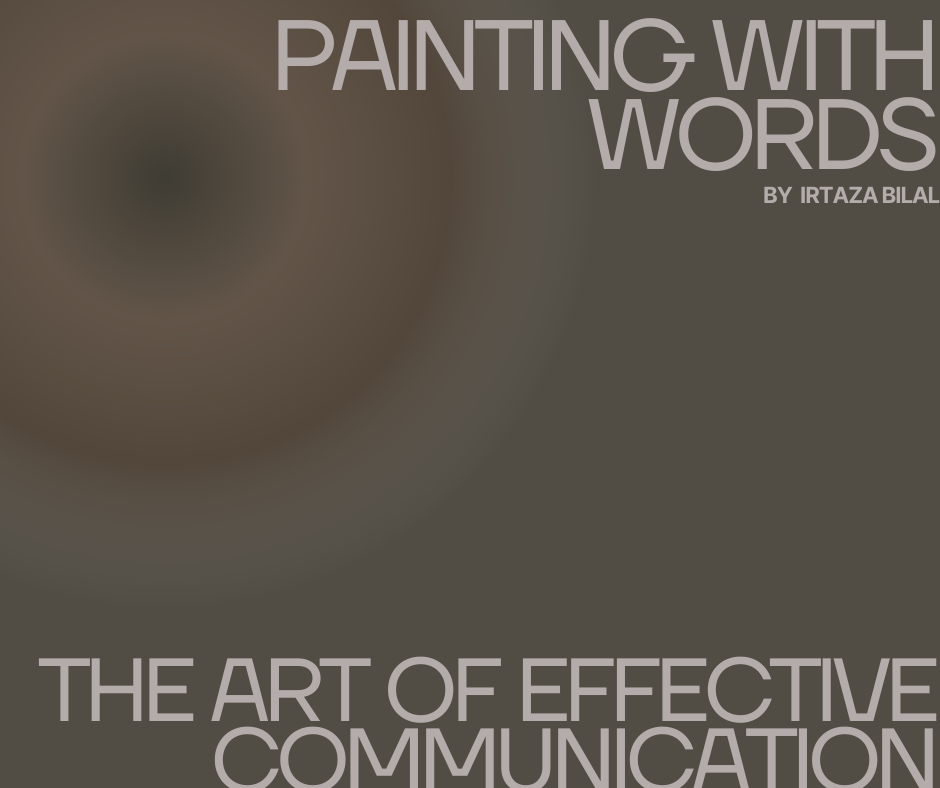Communication is the cornerstone of human interaction. It’s how we share ideas, emotions, and information. While speaking is the most obvious form of communication, a more intricate and impactful aspect lies in the art of crafting words to create vivid mental images – akin to painting with a brush on a canvas. In this digital age, where communication happens at lightning speed, mastering the art of effective communication is more crucial than ever before.
The Canvas of Imagination
Just as a painter uses colors to evoke emotions, a skilled communicator employs words to paint mental pictures. When words are chosen thoughtfully, they can transport the audience to another world. Consider the difference between saying “a tree” and “a gnarled oak standing tall, its branches embracing the sky.” The latter not only communicates an image but also stirs emotions and associations.
Choosing the Right Palette
Like an artist selecting the perfect shades, a communicator must choose words that match the intended message. Are you aiming for a formal tone, a casual conversation, or something that sparks intrigue? Your choice of words will set the tone for the interaction. For instance, addressing a group as “esteemed colleagues” creates a different atmosphere than “hey, guys!”
The Brushstrokes of Clarity
Clarity is the hallmark of effective communication. Just as a well-defined brushstroke adds detail to a painting, clear and concise language ensures your message is easily understood. Long-winded sentences and convoluted jargon can muddy the waters. Consider breaking complex ideas into smaller, digestible pieces, just as an artist might focus on one area of a canvas at a time.
Adding Depth with Metaphors and Analogies
Metaphors and analogies are the shadows and highlights in the canvas of communication. They make the abstract relatable. Saying “time is money” paints a picture of value attached to time. Similarly, “life’s journey is like sailing uncharted waters” conjures a sense of adventure and uncertainty. These devices enrich your message, making it memorable and engaging.
The Power of Active Listening
Effective communication is not just about speaking; it’s also about listening. Just as a painter observes the world around them for inspiration, active listening allows you to understand your audience better. This insight enables you to tailor your words to resonate with their experiences, making your message more impactful.
Editing: Polishing the Masterpiece
Every painter knows that refining a piece takes time. Similarly, crafting a well-communicated message often involves editing and revising. Review your words for clarity, coherence, and conciseness. Are there unnecessary brushstrokes that can be removed to reveal a clearer image? Don’t hesitate to refine until your message shines.
Emotion: The Heart of the Art
Emotion is the beating heart of effective communication. Just as a painting can evoke joy, sadness, or wonder, your words should elicit feelings. Share personal stories, anecdotes, and experiences to connect with your audience on an emotional level. This connection makes your message not just understood but also felt.
Conclusion: Mastering the Craft
“Painting with words” is more than just a metaphor; it’s an intricate art form that demands practice, patience, and an understanding of your audience. As you continue honing your skills, remember that effective communication is a dynamic process. Like a painting that evolves with each brushstroke, your words can adapt and grow to resonate with the ever-changing landscape of human interaction. So, whether you’re crafting a persuasive argument, telling a story, or inspiring change, let the art of communication be your guide to creating meaningful connections that leave a lasting impact.

